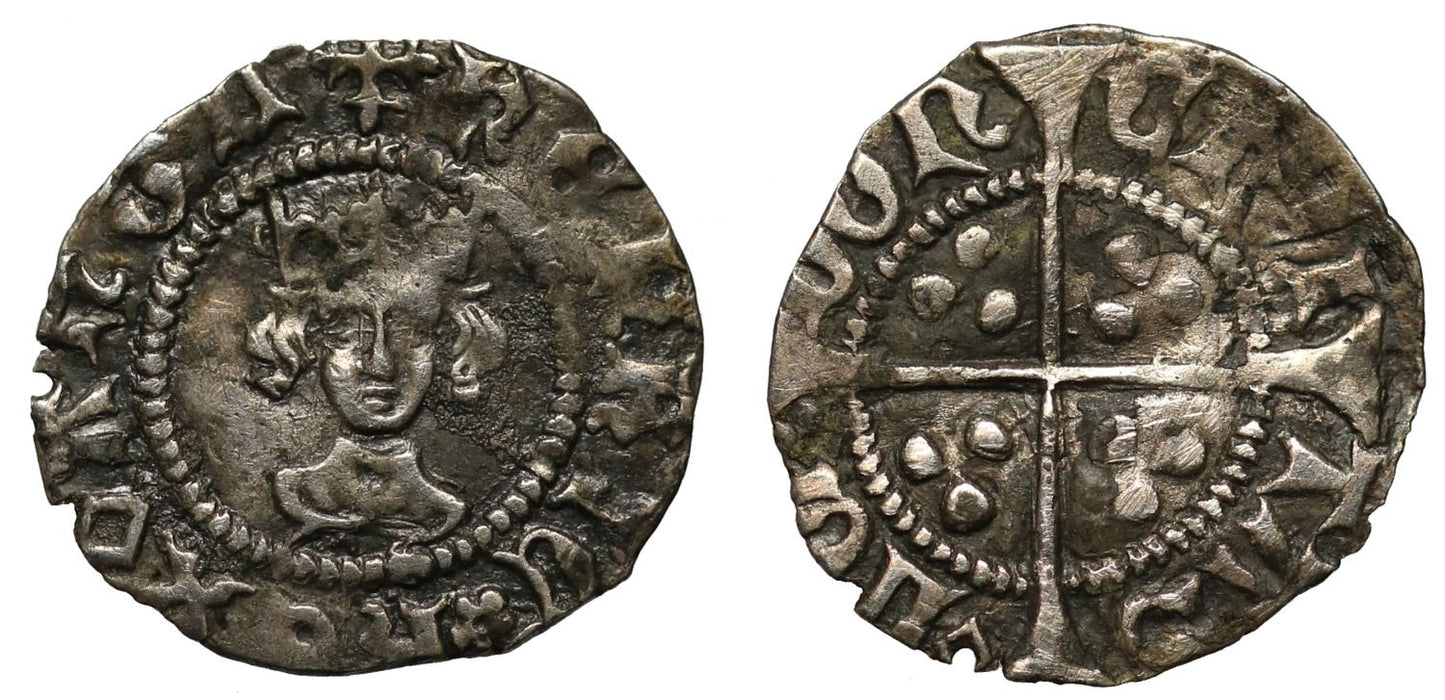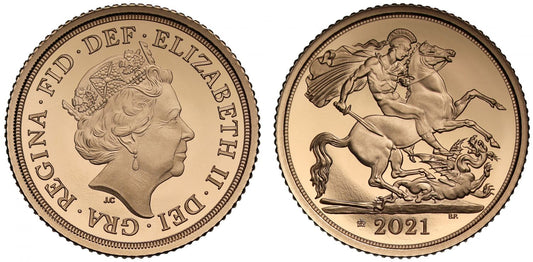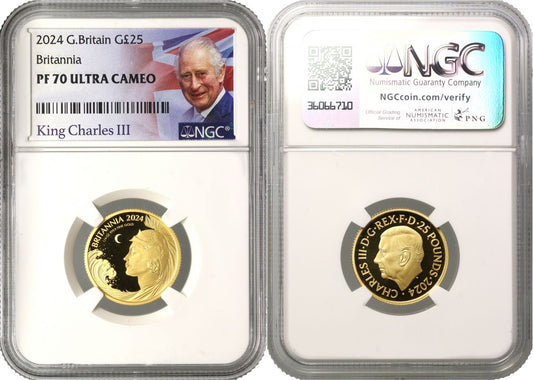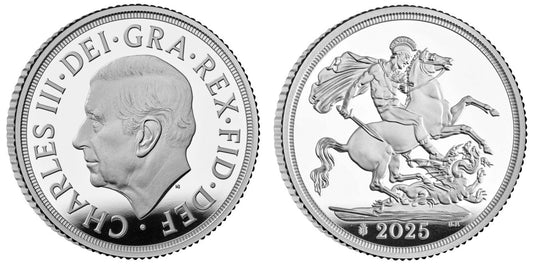FAQs
What makes a coin valuable?
I have coins to sell, what’s the next step?
How will my purchases be shipped?
What happens if I’m not entirely happy with my purchase?
Henry VI Halfpenny, Rosette-Macle issue, London Mint, mm cross fleury
Henry VI, first reign (1422-61), silver Halfpenny, London Mint, rosette mascle issue (1430-31), facing crowned portrait, beaded circles and legend surrounding, initial mark cross fleury, hEnRIC* REX◊ AnGL, rev. long cross pattée, trio of pellets in each angle, CIVI TAS ◊LOn DOn, weight 0.41g (Withers RM.6b; N.1453; S.1870). Dark tone, a couple of rim nicks, otherwise a bold to good very fine with a nice portrait.
The Latin legends translate as on the obverse "Henry King of England" and on the reverse "City of London."
Henry was born on the 6th December 1421 and became the infant King of England, the youngest person ever, on the 1st September 1422 and after the death of his maternal grandfather Charles VI on 21st October 1422, the disputed King of France which he reigned over until 19th October 1453. Henry is the only King in British history to be also crowned King of France, his English coronation being on 6th November 1429 at the age of 8 and the French coronation at Notre Dame, Paris on 16th December 1431 age 10. The early part of his reign was governed by a Regency Council of eighteen led by his uncle John Duke of Bedford, but dominated by his uncle Humphrey Duke of Gloucester (who became Lord Protector) and Bishop Henry Beaufort. Having inherited the War in France from his Father, this council soon became split and by 1429 with the rise of a resurgent French army led by Joan of Arc, and the crowning of the Dauphin as Charles VII at Reims and with the French gaining the upper hand, a peace party emerged under the now Cardinal Beaufort, as war was such a drain on resources. A further blow was the loss of the support of Burgundy upon the death of Anne of Burgundy, the former wife of John Duke of Bedford, in 1432 and his subsequent marriage to Jacquetta of Luxembourg. A conference was arranged at Arras in 1435 but the Duke of Bedford died just before it took place, and his replacement Richard Duke of York did not favour the peace policy. By the time Henry came of age at 16 and was crowned again at Merton Priory on 1st November 1437, he entered the fray at the worst time possible with rivalries amongst the council of nobles, massive war debts leading to the economic "great Slump" in England and coupled with a lack of leadership in the French territories, which were slowly becoming French again to the extent that Henry was left with only Calais as of 1453, having lost the Duchy of Aquitaine in 1451 and Bordeaux, despite having married the strong willed Margaret of Anjou in 1445 in an attempt at brokering peace. Margaret became more of a power behind the throne, and they had one son Edward of Lancaster on 13th October 1453. Discontent in England was growing not helped by Henry suffering episodes of mental breakdown, the Duke of York returned from Ireland in 1452 to take his place on council to put an end to bad government, but through the intervention of Margaret the Duke was isolated and it was when King Henry regained his senses around Christmas of 1454 that the Wars of the Roses gained momentum. Earls Warwick and Salisbury backed the Duke of York claiming his better ascendency from Edward III should give him control of government, and later from 1460 as King. Tensions continued between the Lancastrians and the Yorkists and Henry created the Council of Wales and the Marches for his son Edward in 1458, but by 1460 all out war broke out, with the Battle of Northampton on 10th July of that year capturing Henry, though Margaret escaped to Scotland with Prince Edward to recoup and gain support there, which led to the Battle of Wakefield on 30th December 1460 when York fell. This led on to the Battle of St Albans on 17th February 1461 where Warwick the captor of the King was defeated liberating Henry. The next engagement was the violent Battle of Towton on 29th March 1461 where the King and Queen were defeated by the Duke of York's son Edward, escaping to Scotland again to gain more support, with Margaret travelling on to France to encourage even more. Despite further unsuccessful skirmishes in succeeding years in the north of England it was after the Battle of Hexham on 15th May 1464 that the now fugitive King Henry was captured on 13th July 1464 and sent to the Tower of London. Queen Margaret was determined to win back the throne for her husband, and after Edward IV fell out with his younger brother George Duke of Clarence and Richard Neville Earl of Warwick, she formed a secret alliance with them urged by Louis XI of France. The Earl of Warwick married his daughter Anne to Margaret and Henry's son Edward, and then forced Edward into exile and restored Henry VI to the throne on 3rd October 1470 as the "readeption" though Warwick and Clarence effectively ruled in Henry's name. The rulership only lasted six months as Warwick declared war on Burgundy causing Charles the Bold to support and give assistance to Edward IV, killing Warwick at the Battle of Barnet on 14th April 1471, reconciling with the Duke of Clarence, and directly leading to the decisive Battle of Tewkesbury on 4th May 1471, where Henry's son Edward of Westminster was killed. Henry was imprisoned in the tower and was dead by the 21st May 1471. He was buried at Chertsey Abbey, later moved by order of Richard III to St George's Chapel Windsor.
Capital City London upon the River Thames following Roman occupation, minted some of the earliest Saxon coins with gold Thrymsas and silver denarii with a "Londuniu" signature. Mercian Kings beginning with Offa minted coins there, but the first coin to actually say City of London upon it is the unique Ludica portrait Penny that was found in 2016, followed by subsequent coins of Ecgberht. In 871 the Danes wintered in London for the first time but was King Alfred of Wessex who settled and fortified the capital circa 880 to resist further invasions. Edward the Elder incorporated the City in Wessex in 911 and it resisted a major attack in the reign of Aethelred II in 1009. However, London submitted to the Danish Swein in 1013, but three years later the citizens accepted Eadmund Ironside as King and resisted a siege by Canute.
Later unsettled times occurred in the anarchy period of the reign of King Stephen, remaining loyal to the King except for a few months in 1141 when Empress Matilda was admitted but within a short time expelled. Coinage activity here has been mostly constant throughout history from the Romans until the reign of our current Queen and only moving out to Wales from 1969.
Provenance:
Ex A. H. Baldwin, Fixed Price List, BH.205
Ex Collection of an English Doctor part III, Sovereign Rarities fixed price list online September 2022.
FAQs
What makes a coin valuable?
I have coins to sell, what’s the next step?
How will my purchases be shipped?
What happens if I’m not entirely happy with my purchase?













